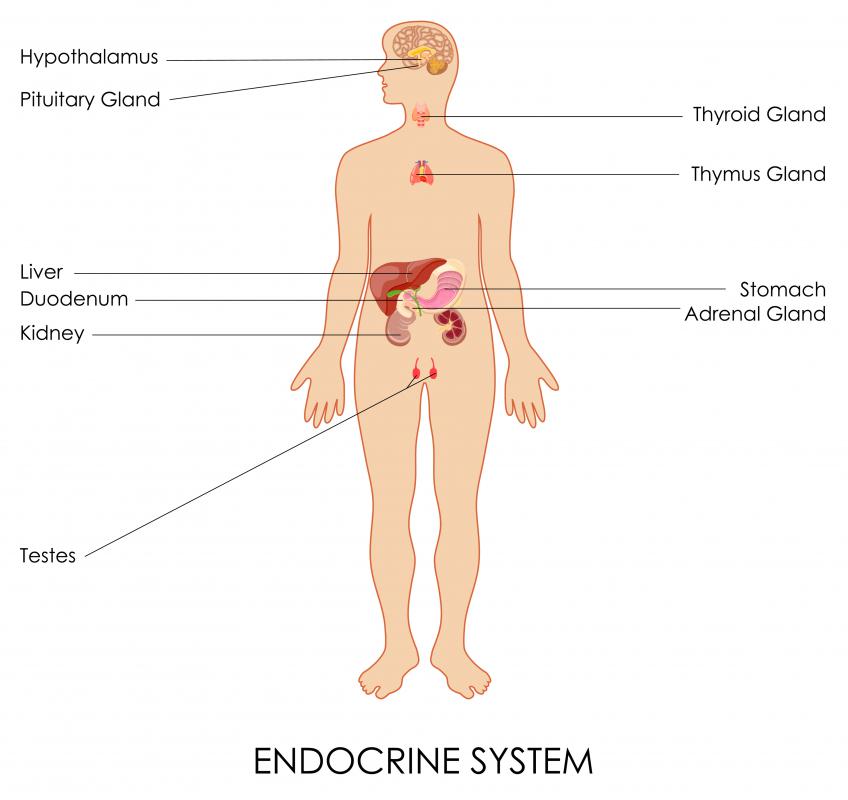At TheHealthBoard, we're committed to delivering accurate, trustworthy information. Our expert-authored content is rigorously fact-checked and sourced from credible authorities. Discover how we uphold the highest standards in providing you with reliable knowledge.
What Are Enteroendocrine Cells?
The endocrine system produces signaling chemicals for specific internal parts of the body. The enteroendocrine cells are those endocrine cells that are located in the gastrointestinal system. They produce hormones and other signaling molecules that act on the brain and other parts of the body, in response to environmental changes in the digestive tract. The cells help the body absorb food efficiently and signal when hunger and thirst are satisfied.
Although lots of cells in the body produce signaling molecules, only some have this as a primary function. When the signaling molecules act on the inside of the body, they are collectively known as endocrine cells. In the case of the enteroendocrine cells, these particular cells are present in the stomach and intestines. One more type of endocrine cells in the digestive tract, called the islets of Langerhans, are located in the pancreas.

Enteroendocrine cells make up less than 1 percent of the cells that line the digestive tract, but they form the largest collection of endocrine cells in the body. Most of the cells in the tract are either specialized to absorb food and water or to release molecules into the gastronintestinal tract. Enteroendocrine cells space themselves among these other cells. More of them are found in the glands of the stomach and in the crevices of the intestine than anywhere else.

Technically, these cells are types of epithelial cells and are related to skin cells. They have a column-like shape under the microscope. Their basic function is to sense alterations in the environment of the digestive tract and tell the brain and other parts of the body to react accordingly. Different types of enteroendocrine cells exist, and each has a different function.

Hormones and other signaling chemicals are the method by which enteroendocrine cells transmit information. When particular chemicals are sensed in the digestive tract, specific types of cells react. When calcium or amino acids from food enter the stomach, for example, enteroendocrine cells in the stomach release a hormone called gastrin. The gastrin moves around the body through the circulatory system and works on another type of cell to promote the production of another signaling molecule called histamine. The action of histamine on the cells of the gastric tract then promote the release of acid to help break down the food in the stomach.

Normal responses to feeling full and satisfied are also controlled by the enteroendocrine system. The substances cholecystokinin, glucagon-like peptides and peptide YY are all products of various forms of these cells that are produced when the cells sense the presence of different forms of energy sources such as fats, proteins and carbohydrates. Abnormal levels of these signaling chemicals might play a role in disorders such as obesity and type 2 diabetes.
AS FEATURED ON:
AS FEATURED ON:














Discuss this Article
Post your comments